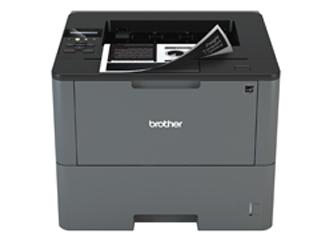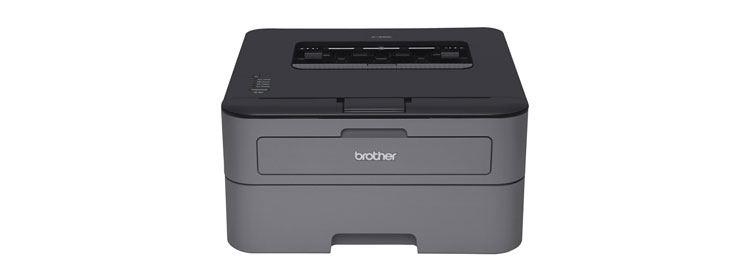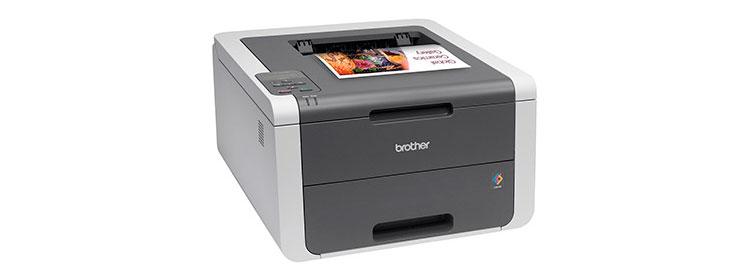The Brother HL-L6200DW ($249.99) delivers a balance of speed, paper handling, and running costs that make it a solid pick for any home, micro, or small office that needs a monochrome laser printer for moderate to heavy-duty use. Its weakest point is text quality that’s near the low end of the range for monochrome lasers. But even subpar text on a laser printer is easily good enough for most business use. More important is the overall balance of features that makes this printer worth considering.
What keeps the HL-L6200DW$169.95 at B&H Photo-Video-Pro Audio from being our Editors’ Choice for its category is not that it lacks something, but that there are other printers that offer just a bit more. In particular, Brother’s own HL-6180DW$299.99 at Walmart.com and the Dell B2360dn$189.99 at Dell Small Business—both top picks for small-office monochrome lasers for up to heavy-duty use—match the HL-L6200DW or come close in most key areas, with the Brother HL-6180DW also offering notably better text quality in our tests, and the Dell printer offering faster speed.
Basics and Beyond
That said, the HL-L6200DW’s particular mix of features could still be the better fit for your office. Its paper handling is easily suitable for up to heavy-duty use in a small office or workgroup, with a 520-sheet drawer, 50-sheet multipurpose tray, and duplexer standard. If that’s not enough, you can add up to three optional 250-sheet drawers ($179.99 each) to boost capacity to as much as 1,320 sheets, or up to two 520-sheet drawers ($209.99 each) for a maximum 1,610 sheets, or one of each size drawer for 1,340 sheets.
As is typical for any printer with this high a paper capacity, the HL-L6200DW is big enough so you probably won’t want it sitting on your desk. With the standard capacity, it measures 11.3 by 14.7 by 15.3 inches (HWD), with the height growing by 4.8 inches for each additional 250-sheet drawer, or by 6 inches for each additional 520-sheet drawer. Even with just the standard tray, the height makes the printer imposing enough that you might not want to share a desk with it. However, the footprint ties up a smaller area than many inkjets, so you may want to keep it near your desk if not on it.
Connection choices include USB, Ethernet, Wi-Fi, and Wi-Fi Direct. If you connect the printer to a network via either Ethernet or Wi-Fi, you can also print to it through the cloud, as well as connect to it through an access point on your network to print from a mobile device. If you connect it to a single PC via USB cable instead, you’ll lose the ability to print through the cloud, but can still print from a mobile device by connecting directly to the printer using Wi-Fi Direct.
Setup, Speed, and Output Quality
At 26 pounds 6 ounces, the HL-L6200DW is light enough for one person to move into place. For my tests, I connected it to a network using its Ethernet port and installed the drivers on a Windows Vista system. Setup is standard for the breed.
The speed in our tests was a little slow for the 48 pages-per-minute (ppm) rating, but acceptably fast for the price. I clocked the printer on our business applications suite (timed with QualityLogic’s hardware and software), at 12.7ppm. That makes it faster than the Brother HL-6180DW, at 10.7ppm, but significantly slower than the Dell B2360dn, which came in at 15ppm in our tests despite its slower engine, rated at 40ppm.
As another point of reference, the HL-L6200DW was also slower in our tests than the Dell Smart Printer S2810dn$179.99 at Dell, which Dell rates at only 35ppm, but we clocked at 13.4ppm when printing in simplex. Even in its default duplex mode, which adds time to turn over each page to print on the second side, the Dell S2810dn was only slightly slower than the HL-L6200DW, at 11.8ppm.
Output quality for the HL-L6200DW is a mixed bag. Text is subpar, with the quality falling at the bottom of the range for the category in our tests. However, monochrome lasers handle text so well that even the lowest rung on the laser-quality ladder is good enough for almost any business use. As long as you don’t have an unusual need for small fonts, you shouldn’t have any complaints.
Graphics quality in our tests was typical for a monochrome laser, which makes it good enough for any internal business need. It’s also good enough for PowerPoint handouts or the like, unless you have a critical eye. Photo quality is better than typical. The photo output in our tests was basically a match for the high end of newspaper photo quality.
Conclusion
Offices that need somewhat better text quality than the Brother HL-L6200DW delivers should consider the Brother HL-6180DW, the Dell B2360dn, or the Dell S2810dn. All three are roughly matched for text quality, with the Brother HL-6180DW offering the highest paper capacity, and the Dell B2360 offering the fastest speed in our tests. For offices that don’t need the step up in text quality, the HL-L6200DW offers the highest paper capacity in the group, the best photo quality, and faster speed in our tests than the Brother HL-6180DW.


















